Looking for the best mic for FL Studio? Look no further! We tested and researched the top mics for recording vocals and instruments in FL Studio.
Whether you’re a professional producer or a beginner, finding the right mic can make all the difference in your music production. In this article, we’ll share our top picks and give you the short answer on which mic is the best for FL Studio. Keep reading for our expert insights and detailed reviews. Let’s get started!
Best Mic for FL Studio
We understand that finding the right microphone for your FL Studio project can be a daunting task, especially with the abundance of options available in the market.
As music enthusiasts ourselves, we have tested and researched various microphones to compile a list of the best ones for FL Studio.
Our selection is based on factors such as sound quality, compatibility, and affordability. Below is our roundup of the best mics for FL Studio that will take your music production to the next level.
The top 12 Best Mic for FL Studio according to Best Quick Reviews are:
- Shure SM7B Dynamic Vocal Microphone
- Audio-Technica AT2020 XLR Microphone
- MXL 990 Large-Diaphragm Condenser Microphone
- AKG Pro Audio C414 XLII Microphone
- Rode NT1 Kit Microphone
- Shure SM58-LC Cardioid Dynamic Vocal Microphone
- Logitech For Creators Yeti USB Microphone
- Logitech for Creators Blue Yeti X USB Microphone
- RØDE NT1 5th Microphone
- Electro-Voice RE20 Broadcast Announcer Microphone
- Neumann TLM 102 MT
- Sennheiser Pro Audio MD 421-II
1. Shure SM7B Dynamic Vocal Microphone
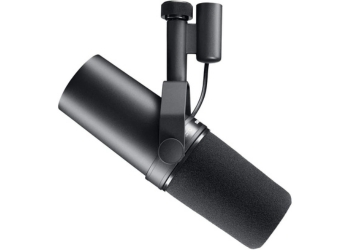
The Shure SM7B Dynamic Vocal Microphone is a top-of-the-line microphone that provides clear and natural sound reproduction. It is perfect for recording in FL Studio, podcasting, streaming, and broadcasting.
Pros
- The SM7B is a versatile microphone that can be used for a variety of applications, from music recording to podcasting and broadcasting.
- The dynamic cartridge produces exceptionally clean and natural reproduction of both music and speech.
- The SM7B has advanced electromagnetic shielding that eliminates hum from computer monitors and other studio equipment.
Cons
- The SM7B is a large and heavy microphone, which may not be suitable for all recording setups.
- The SM7B requires a lot of gain, which may not be provided by all preamps.
- The SM7B is a relatively expensive microphone, which may not be affordable for all users.
The Shure SM7B Dynamic Vocal Microphone is a high-quality microphone that offers excellent sound quality and advanced features.
It has a classic cardioid pattern with uniform capture, which is designed to reject off-axis audio. This makes it easy to sing or speak at a comfortable angle and capture the sound with minimum coloration.
The SM7B also includes a close-talk windscreen and switch cover plate, which are detachable.
The bass rolloff and mid-range emphasis control with graphic display of response setting give you more control over the sound, resulting in a better overall sound quality.
Related Posts:
- How To Not Hear Yourself On Mic FL Studio 12?
- How To Record With A Mic In FL Studio: A Beginner’s Guide
2. Audio-Technica AT2020 Cardioid Condenser Studio XLR Microphone
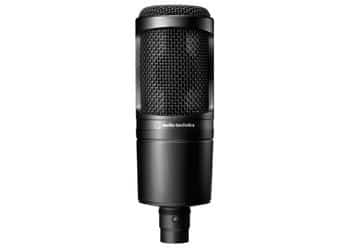
If you’re looking for a reliable and affordable microphone for recording in FL Studio, the Audio-Technica AT2020 is an excellent choice. With its custom-engineered low-mass diaphragm, wide dynamic range, and superior transient response, this mic delivers high-quality sound that’s ideal for home studio applications.
Pros
- The AT2020 offers excellent value for its price and is a great entry-level option for those looking to upgrade from basic recording setups.
- The cardioid polar pattern reduces pickup of sounds from the sides and rear, improving isolation of desired sound sources.
- The microphone provides high SPL handling and wide dynamic range, making it versatile enough to handle a variety of recording situations.
Cons
- Some users have reported that the microphone is somewhat sensitive to handling noise and may pick up unwanted sounds if not used with care.
- The AT2020 requires a separate XLR cable and audio interface to connect to a computer or other recording device, which may be an additional expense for some users.
- While the microphone is durable and well-built, some users have noted that the included stand mount can be somewhat flimsy and may not provide the most stable support.
Overall, the Audio-Technica AT2020 is an excellent choice for those looking for an affordable and reliable microphone for recording in FL Studio.
While it may not have all the bells and whistles of more expensive models, it delivers high-quality sound and is an excellent value for its price.
If you’re looking to get the most out of your AT2020, we recommend pairing it with a high-quality audio interface and investing in a sturdy, reliable stand mount.
With the right setup, this microphone can deliver excellent results and help take your recordings to the next level.
3. MXL 990 Large-Diaphragm Condenser Microphone
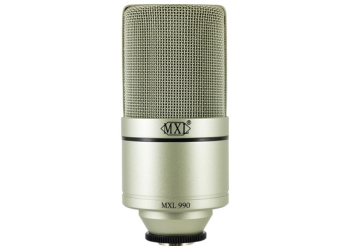
If you’re a professional recording artist looking for a microphone that delivers high-quality sound, the MXL 990 is an excellent choice.
With a FET preamp and a large diaphragm, this condenser microphone is perfect for both digital and analog recordings. It has a vintage body style with a champagne finish and comes with a custom shock mount, mic stand adapter, and carrying case.
Pros
- FET based design with transformer balanced output for a variety of applications.
- Vintage body style with champagne finish.
- Provides silky sweet high end and retains tight, solid low and midrange reproduction.
Cons
- May pick up background noise if not used in a soundproof environment.
- May require additional equipment to get the best sound quality.
- Requires phantom power 48V (+- 4V).
The MXL 990 is a great microphone for recording vocals, acoustic guitars, and other acoustic instruments. It provides a silky sweet high end and retains tight, solid low and midrange reproduction.
The vintage body style with champagne finish gives it a classic look that will fit in with any studio décor.
One of the drawbacks of the MXL 990 is that it may pick up background noise if not used in a soundproof environment.
It may also require additional equipment to get the best sound quality, such as a preamp or a compressor. Additionally, it requires phantom power 48V (+- 4V), which may not be available on all audio interfaces.
Overall, the MXL 990 is a great microphone for professional recording artists who are looking for a high-quality microphone that delivers excellent sound quality. It’s a great investment for anyone who is serious about their music and wants to produce the best possible recordings.
Related Posts:
- How To Connect Focusrite Mic With FL Studio? Beginner’s Guide
- Remove White Noise From Mic FL Studio: Quick And Easy Tips
4. AKG Pro Audio C414 XLII Microphone
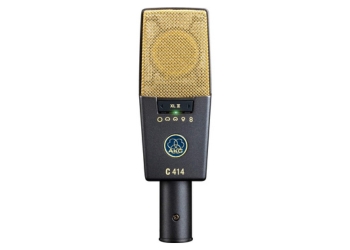
The AKG Pro Audio C414 XLII Microphone is an excellent choice for recording vocals and solo instruments in FL Studio.
With its nine selectable polar patterns, three attenuation levels, and three switchable bass-cut filters, this microphone offers versatile sonic capture for every application.
The peak hold LED displays even the shortest overload peaks, and all controls can easily be disabled for trouble-free use in live sound applications and permanent installations.
Pros
- The sonic character of the famous AKG C12 delivers astounding sound quality for lead vocals and solo instruments.
- Nine selectable polar patterns for the perfect setting for every application.
- Three attenuation levels (-6/-12/-18dB) for close-up recording or high-output sources of up to 158dB SPL.
Cons
- The microphone requires a phantom power supply to operate, which may be an additional expense.
- The microphone is quite sensitive, and it may pick up background noise if not used in a sound-treated environment.
- The microphone is relatively expensive compared to other options on the market.
The AKG Pro Audio C414 XLII Microphone is an excellent choice for professionals who require high-quality sound capture for their recordings.
The microphone’s sonic character is similar to the legendary AKG C12 microphone from 1953, which enables lead vocals and solo instruments to be placed even in a dense mix.
The microphone’s nine pickup patterns enable you to choose the perfect setting for every application, making it a versatile tool for any recording situation.
The microphone’s three attenuation levels and three switchable bass-cut filters make it easy to adjust the microphone’s output for close-up recording or high-output sources up to 158dB SPL.
The peak hold LED is a useful feature that displays even the shortest overload peaks, making it easy to avoid clipping and distortion.
One potential drawback of the AKG Pro Audio C414 XLII Microphone is its sensitivity, which may pick up background noise if not used in a sound-treated environment. Additionally, the microphone requires a phantom power supply to operate, which may be an additional expense for those who do not already have one.
Overall, the AKG Pro Audio C414 XLII Microphone is an excellent choice for professionals who require high-quality sound capture for their recordings.
Its versatility, sonic character, and useful features make it a valuable addition to any recording setup.
5. Rode NT1 Kit Microphone

The Rode NT1 Kit Microphone is a great choice for professional recording in FL Studio.
Pros
- Low noise level
- Suspended transducer
- Durable ceramic coating
Cons
- Requires phantom power
- Sensitive to handling noise
- Shock mount is bulky
The Rode NT1 Kit Microphone features an ultra-low noise level of only 4.5dB (A), making it an excellent choice for professional recording in FL Studio.
The transducer is suspended inside the microphone using Rycote’s Lyre system, minimizing external vibrations at the capsule level. The microphone is coated in a durable, military-grade ceramic layer to ensure an extremely hard wearing finish that is resistant to scratches or marks.
One potential drawback of the Rode NT1 Kit Microphone is that it requires phantom power to operate, which may not be available on all recording equipment.
Additionally, the microphone is sensitive to handling noise, so it’s important to use the included shock mount to minimize unwanted noise. The shock mount itself is also quite bulky, which may be a concern for those with limited space in their recording setup.
Despite these drawbacks, the Rode NT1 Kit Microphone is an excellent choice for professional recording in FL Studio. Its low noise level, suspended transducer, and durable ceramic coating make it a reliable and high-quality option for any recording project.
Related Posts:
- How To Fix Mic Delay In FL Studio? Quick Solutions
- How To Fix Echo In Mic FL Studio 12: Quick & Easy Solutions
6. Shure SM58-LC Cardioid Dynamic Vocal Microphone
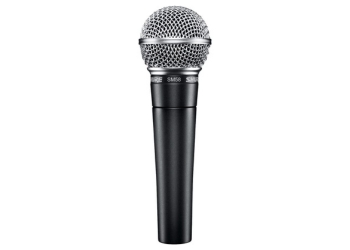
If you’re a professional recording artist looking for a microphone that delivers exceptional vocal performance, the Shure SM58-LC Cardioid Dynamic Vocal Microphone is the perfect choice for you. This microphone is the industry standard and is widely used by performers around the globe.
Pros
- The SM58-LC delivers high-quality vocal reproduction, thanks to its tailored frequency response and brightened midrange for clear and present vocals.
- The uniform cardioid polar pattern reproduces every note as it was intended, delivering warm, crisp sound time after time.
- The SM58 has a spherical mesh grille and built-in pop filter to keep any unwanted noise out of the mix.
Cons
- The SM58 is a bit expensive compared to other microphones in the market, but its features and quality make it worth the investment.
- The microphone is a bit heavy, which can be a hassle if you’re recording for long periods.
- The SM58 requires an XLR cable, which is not included in the package.
The Shure SM58-LC Cardioid Dynamic Vocal Microphone is a versatile microphone that can hold its own live onstage as well as in the studio, isolating between vocals and instruments.
The microphone’s durability is impressive, making it the perfect companion on the road, going strong through the toughest performances.
The SM58-LC is designed for professional vocal use in live performance, sound reinforcement, and studio recording.
It has a tailored vocal response for a sound that is a world standard for singing or speech. The microphone’s highly effective, built-in spherical filter minimizes wind and breath “pop” noise. A cardioid pickup pattern isolates the main sound source while minimizing unwanted background noise.
7. Logitech For Creators
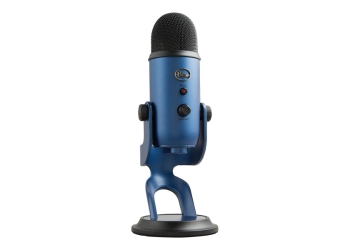
If you’re looking for a professional-grade microphone for recording in FL Studio, the Logitech For Creators Yeti USB Microphone is an excellent choice.
With its custom three-capsule array, Blue VO!CE software, and four pickup patterns, the Yeti offers clear, powerful, broadcast-quality sound for music, podcasts, Twitch streaming, YouTube videos, and Zoom calls.
Pros
- The Blue VO!CE software allows you to craft the perfect broadcast vocal sound with enhanced effects, advanced modulation, and HD audio samples.
- The four pickup patterns offer incredible flexibility, allowing you to record and stream in ways that would normally require multiple microphones.
- The onboard audio controls put you in charge of every level of the recording and streaming process.
Cons
- The microphone is a bit bulky and may not fit comfortably in front of you.
- The loose connections may cause the microphone or jack port to sometimes unplug.
- Out of the box, the microphone doesn’t sound great and may require some tweaking to achieve optimal sound quality.
The Logitech For Creators Yeti USB Microphone is a great investment for professionals looking for a high-quality microphone for recording in FL Studio.
The Blue VO!CE software makes it easy to achieve professional on-stream sound quality with enhanced broadcast vocal effects, advanced voice modulation, and HD audio samples.
The four pickup patterns offer incredible flexibility, allowing you to record and stream in ways that would normally require multiple microphones.
The onboard audio controls put you in charge of every level of the recording and streaming process, making it easy to adjust headphone volume, pattern selection, instant mute, and microphone gain.
Related Posts:
- How To Use Mic And Speakers At The Same Time FL Studio?
- How To Change Mic In FL Studio? A Quick Guide
8. Logitech for Creators Blue Yeti X USB Microphone
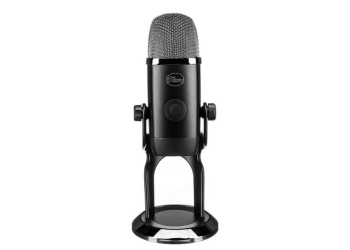
The Logitech for Creators Blue Yeti X USB Microphone is an excellent choice for professional recording in FL Studio. With four versatile pickup patterns, it delivers Blue’s legendary sound with greater focus and clarity than ever.
The high-res LED audio meter and illuminated multi-function smart knob allow for real-time monitoring and precise control over your sound.
The Blue VO!CE software provides advanced modulation and HD audio samples, making it easy to craft the perfect broadcast vocal sound. Customizable LED lighting lets you personalize the look of your mic.
Pros
- Four versatile pickup patterns
- High-res LED audio meter and illuminated multi-function smart knob
- Blue VO!CE software provides advanced modulation and HD audio samples
Cons
- May not capture all the detail in your voice
- Logitech G Hub does not work with Mac
- Custom LED lighting is only available in Logitech G Hub
The Logitech for Creators Blue Yeti X USB Microphone is a fantastic choice for recording in FL Studio.
The four versatile pickup patterns make it easy to capture the perfect sound, and the high-res LED audio meter and illuminated multi-function smart knob allow for real-time monitoring and precise control over your sound.
The Blue VO!CE software provides advanced modulation and HD audio samples, making it easy to craft the perfect broadcast vocal sound.
While the Blue Yeti X captures your voice well, it may not capture all the detail. Additionally, Logitech G Hub does not work with Mac, which may be an issue for some users.
Finally, custom LED lighting is only available in Logitech G Hub, which may be a downside for those who want to personalize the look of their mic.
9. RØDE NT1 5th Microphone
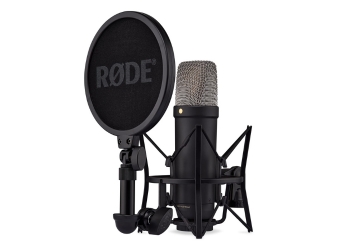
The RØDE NT1 5th Microphone is a groundbreaking studio condenser microphone that fuses the classic sound signature of the iconic NT1 with patented next-generation technology.
It is perfect for recording FL Studio, as it offers the classic warm, silky character, extremely low self-noise, and high SPL handling capability that the original is revered for, making it ideal in a wide range of applications, from recording voiceovers or podcasts to capturing vocals, guitars, drums, or piano.
Pros
- The microphone offers both XLR and USB connectivity, featuring an on-board audio interface with studio-grade digital output, making it an all-in-one digital recording solution for the home or the studio.
- The RØDE NT1 5th Microphone features RØDE’s ultra-low-noise, high-gain Revolution Preamp and high-resolution (up to 192kHz) analog-to-digital conversion for crystal-clear digital recordings.
- The body of the microphone is machined from high-grade aluminum with nickel plating and military-grade ceramic coating, ensuring it is ready to take on the rigors of recording day in, day out.
Cons
- The USB Type-C connector is smaller than a regular USB port, which may cause some compatibility issues.
- The microphone is relatively expensive compared to other studio condenser microphones on the market.
- The microphone is quite sensitive, which might require some adjustments to the gain settings on your audio interface.
The RØDE NT1 5th Microphone is an excellent choice for professionals looking for a high-quality studio condenser microphone. Its groundbreaking technology and classic sound signature make it a versatile tool for recording FL Studio.
The microphone is easy to set up and use, and it offers both XLR and USB connectivity, making it an all-in-one digital recording solution. The ultra-low-noise, high-gain Revolution Preamp and high-resolution analog-to-digital conversion ensure that your recordings are crystal-clear and free from unwanted noise.
In terms of drawbacks, the USB Type-C connector may cause some compatibility issues with older computers or audio interfaces. The microphone is also relatively expensive compared to other studio condenser microphones on the market. Additionally, the microphone is quite sensitive, which might require some adjustments to the gain settings on your audio interface.
10. Electro-Voice RE20 Broadcast Announcer Microphone
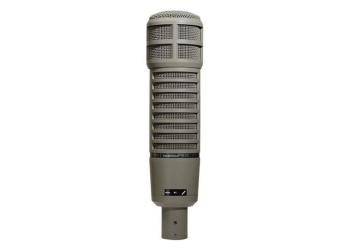
The Electro-Voice RE20 dynamic cardioid microphone is a top choice for professionals in the broadcasting, podcasting, and music production industries. Its Variable-D design and internal pop filter make it ideal for close-in voice work, while the internal element shock-mount reduces vibration-induced noise.
Pros
- Professional quality dynamic cardioid microphone with studio condenser-like performance.
- The classic sound of FM radio voices with smooth, natural, and controlled sonic character.
- Steel case and hum-bucking coil provide exceptional magnetic shielding and guards against line hum.
Cons
- It is gain hungry, so you may need a Cloudlifter or preamp to boost the signal.
- The microphone is relatively heavy, which can make it challenging to position.
- The price point is higher than some other options.
The RE20 is an excellent choice for recording in FL Studio. The microphone’s Variable-D design and internal pop filter make it an ideal choice for close-in voice work, such as recording vocals or voiceovers.
The microphone’s steel case and hum-bucking coil also provide exceptional magnetic shielding, which helps to guard against line hum.
The RE20’s classic sound is perfect for achieving the smooth, natural, and controlled sonic character that is often associated with FM radio voices.
This microphone is also great for podcasts, audiobook narration, talk shows, sports announcers, radio, broadcasting, and music production.
Overall, the Electro-Voice RE20 Broadcast Announcer Microphone with Variable-D Gray Microphone is an excellent investment for professionals looking for a high-quality microphone that offers studio condenser-like performance.
While it may be more expensive than some other options, the RE20’s superior sound quality and durability make it a worthwhile investment for anyone serious about recording in FL Studio.
11. Neumann TLM 102 MT
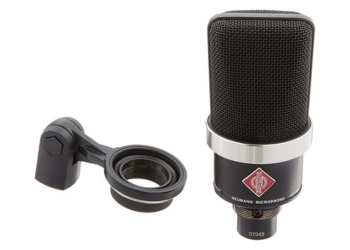
The Neumann TLM 102 MT is a compact and affordable large-diaphragm studio microphone that delivers legendary Neumann sound quality. This mic is perfect for recording instruments, vocals, and speech in home and project studios, as well as in the broadcasting area.
The TLM 102 MT boasts a maximum sound pressure level of 144 dB, which permits the recording of percussion, drums, amps, and other very loud sound sources.
Its very fast transient response also benefits quieter instruments. The TLM 102 MT has a slight presence boost above 6 kHz, providing excellent vocal presence in an overall mix. Up to 6 kHz, the frequency response is extremely linear, ensuring minimal coloration and a clearly defined bass range.
Pros
- Compact and attractive design
- Large-diaphragm microphone with cardioid directional characteristic
- Very high maximum sound pressure level (144 dB)
Cons
- Pricey
- Limited directional pattern
- Requires phantom power
We were impressed with the TLM 102 MT’s performance and value. The mic’s harmonious proportions and gleaming grille ring ensure that it attracts attention.
The capsule has an elastic suspension system that reduces handling and structure-borne noise, and a pop screen integrated into the grille serves to suppress plosives in vocal and speech recording.
We found that the TLM 102 MT excelled with vocals and speech, providing excellent presence in an overall mix. The mic’s frequency response is extremely linear, ensuring minimal coloration and a clearly defined bass range.
The TLM 102 MT is a versatile microphone that can be used in a variety of settings, from home recording and project studios to the broadcasting area.
Its reduced overall size contributes to an exceptionally compact appearance, which unites all of the typical design components of a Neumann microphone. We recommend the TLM 102 MT for professionals looking for a high-quality microphone that can capture instruments, vocals, and speech with exceptional clarity and detail.
12. Sennheiser Pro Audio MD 421-II

The Sennheiser Pro Audio MD 421-II microphone is a great option for recording in FL Studio.
Pros
- The large diaphragm, dynamic element handles high sound pressure levels, making it a natural for recording guitars and drums.
- The five-position bass roll-off switch make it an excellent choice for most instruments, as well as group vocals or radio broadcast announcers.
- Effective feedback rejection.
Cons
- The mic is a bit pricier compared to other dynamic microphones on the market.
- The microphone is a bit heavy, which can be a bit inconvenient when using it for extended periods.
- The microphone does not come with a shock mount.
We were impressed with the Sennheiser Pro Audio MD 421-II microphone’s sound quality and versatility. We used it to record guitars, drums, and vocals, and it performed exceptionally well in all scenarios.
The microphone’s large diaphragm and dynamic element handled high sound pressure levels with ease, providing clear and accurate sound reproduction.
The five-position bass roll-off switch was also a great feature that allowed us to tailor the microphone’s sound to the specific instrument or vocal we were recording. The switch helped us achieve a well-rounded sound that was free of any unwanted low-end frequencies.
The microphone’s feedback rejection was also impressive, allowing us to record at higher volumes without any issues.
However, we did notice that the microphone was a bit heavier compared to other dynamic microphones, which could be a bit inconvenient when using it for extended periods.
Overall, the Sennheiser Pro Audio MD 421-II microphone is an excellent choice for recording in FL Studio. Its versatility, clear sound reproduction, and effective feedback rejection make it a great investment for professionals looking for a high-quality microphone.
Buying Guide
When choosing the best microphone for FL Studio, there are several features to consider. Here are some factors to keep in mind:
Type of Microphone
There are three main types of microphones: dynamic, condenser, and ribbon. Dynamic microphones are durable and can handle high sound pressure levels, making them ideal for recording loud instruments like drums and electric guitars.
Condenser microphones are more sensitive and have a wider frequency range, making them great for capturing vocals and acoustic instruments. Ribbon microphones are known for their warm, natural sound and are often used for recording strings and brass.
Polar Pattern
The polar pattern determines the directionality of the microphone. The most common polar patterns are cardioid, omnidirectional, and bidirectional.
Cardioid microphones pick up sound from the front and reject sound from the sides and rear, making them ideal for recording vocals and solo instruments.
Omnidirectional microphones pick up sound from all directions, making them great for recording ambient sound or group vocals. Bidirectional microphones pick up sound from the front and rear, making them ideal for recording duets or interviews.
Frequency Response
Frequency response refers to the range of frequencies that a microphone can capture.
A flat frequency response means that the microphone captures all frequencies equally, while a colored frequency response means that certain frequencies are emphasized or de-emphasized.
When choosing a microphone, consider the frequency range of the instrument or voice you will be recording and choose a microphone with a frequency response that complements it.
Sensitivity
Microphone sensitivity refers to how much electrical output the microphone produces for a given sound pressure level.
A high-sensitivity microphone produces more output than a low-sensitivity microphone for the same sound pressure level.
When choosing a microphone, consider the sound pressure level of the instrument or voice you will be recording and choose a microphone with an appropriate sensitivity.
Price
Microphone prices can vary greatly, from less than $50 to several thousand dollars. When choosing a microphone, consider your budget and the level of quality you require.
While more expensive microphones may offer better sound quality, there are many affordable options that can produce great results.
By considering these factors, you can choose the best microphone for your FL Studio recordings.
Conclusion
In conclusion, choosing the best mic for FL Studio depends on your specific needs and budget. We recommend considering factors such as the type of microphone, polar pattern, frequency response, and sensitivity.
Additionally, it is important to invest in a quality mic stand and pop filter to ensure clean and clear recordings.
Our top picks for the best mics for FL Studio are the Shure SM7B, Audio-Technica AT4053B, and AKG Pro Audio C214. With these mics, you can achieve professional-quality recordings for your music production projects.
Frequently Asked Questions
What are the top microphones recommended for recording studio-quality vocals?
When it comes to recording studio-quality vocals, there are several microphones that we recommend. Some of the top choices include the Shure SM7B, the Audio-Technica AT4053B, and the Neumann TLM 103. These microphones are known for their exceptional clarity and ability to capture every detail of the vocalist’s performance.
Which budget microphones are preferred by vocalists for recording purposes?
If you’re on a budget, there are still plenty of great options for recording vocals. Some of the most popular budget-friendly microphones include the Audio-Technica AT2020, the Rode NT1-A, and the AKG P220. These microphones offer excellent value for their price and are a great choice for vocalists who are just starting out.
What microphones do professionals typically use in a studio setting?
In a professional studio setting, you’ll often find microphones such as the Neumann U87, the Shure SM7B, and the AKG C414.
These microphones are known for their exceptional quality and are often used by professionals in the music industry. They are a great choice if you’re looking to record studio-quality vocals.
Which microphones are considered the best for capturing live vocal performances?
For live vocal performances, you’ll want a microphone that can handle high sound pressure levels and provide excellent feedback rejection.
Some of the best microphones for live vocals include the Shure SM58, the Sennheiser e965, and the Electro-Voice RE20. These microphones are known for their durability and ability to capture clear, powerful vocals.
What makes the u87 microphone a popular choice among artists?
The Neumann U87 is a popular choice among artists due to its exceptional clarity and versatility. It can be used to record a wide range of vocal styles and is known for its ability to capture every detail of the vocalist’s performance.
Additionally, the U87 is a durable and reliable microphone that is often used in professional recording studios.
What type of microphone is ideal for recording rock vocals with clarity?
When it comes to recording rock vocals, you’ll want a microphone that can handle high sound pressure levels and provide excellent clarity.
Some of the best microphones for recording rock vocals include the Shure SM7B, the Sennheiser MD421, and the Electro-Voice RE20. These microphones are known for their ability to capture powerful, dynamic vocals with exceptional clarity.
